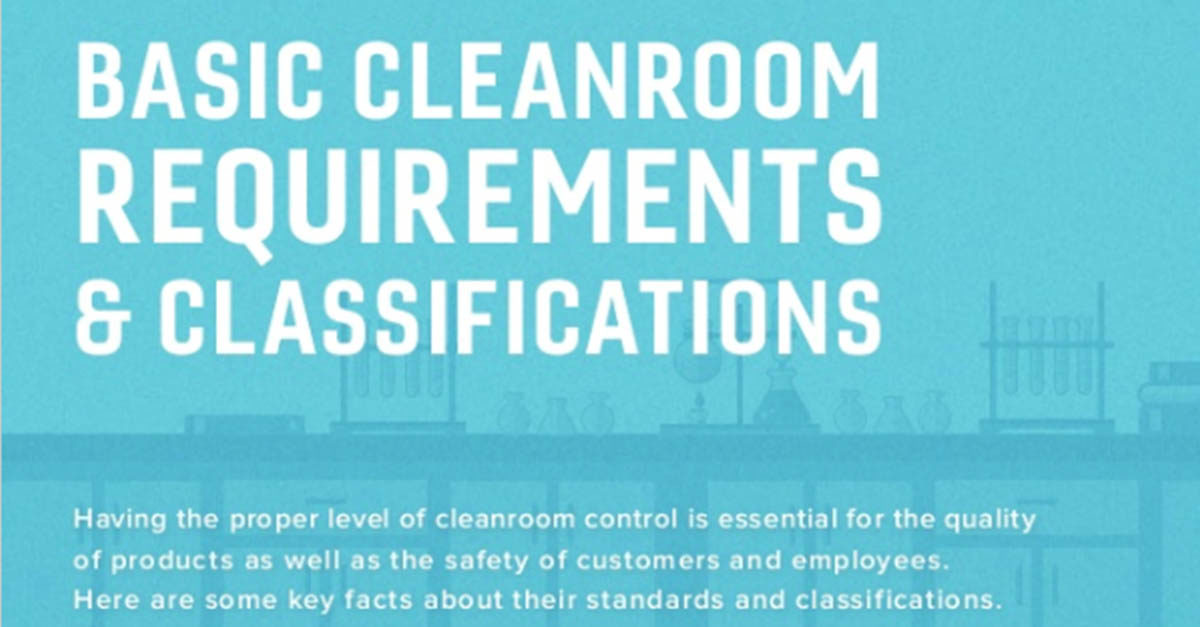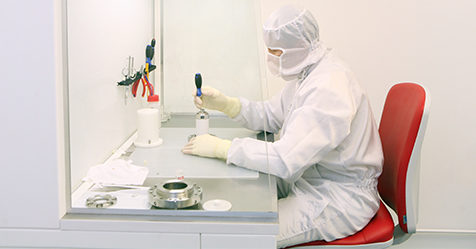Cleanliness is one of the most crucial standards in production facilities and laboratories. The companies that operate these facilities must guarantee that their products are free from outside contaminants or they cannot earn the trust of their customers. Given how critical cleanliness is for lifesaving pharmaceuticals, precision electronics, and other highly sensitive products, securing the cleanroom environment is absolutely essential. Everyone involved in the cleaning and maintenance of cleanrooms—from facility managers to maintenance staff—must have a deep understanding of how cleanrooms function and the extremely high standards they must meet.
The basic elements of a cleanroom are its surfaces, air flow, and employee access. Every surface must be as smooth as possible and impervious to microorganisms. The air-handling system must be extremely effective at filtering out particulates and vapors that could contaminate the room. Finally, a protocol must be in place to ensure that only authorized and trained personnel have access to the cleanroom.
Because each industry has different criteria for cleanliness, cleanroom tolerances for particles also vary. These tolerances are classified according to International Standards Organization (ISO) guidelines. A Class 1 facility has the most stringent specifications for maximum allowable concentrations, while a Class 9 facility permits the highest level of contaminants. In some cases, the classification is mandated by government regulations. In others, industry standards set the baseline.
Regular testing and inspection are essential for guaranteeing the effectiveness of a cleanroom. Generally, the higher the classification, the more frequently inspections should occur. Typically, inspections are connected to compliance testing, which normally happens on an annual or biannual schedule.
A clean environment is a requirement for many industries. Cleanrooms are among the most important components of the production cycle, enabling manufacturers and processors to ensure high-quality products and safe work environments. For more information about cleanrooms and their classifications, see the accompanying infographic.
This infographic was created by Technical Safety Services, a cleanroom testing and certification company.



